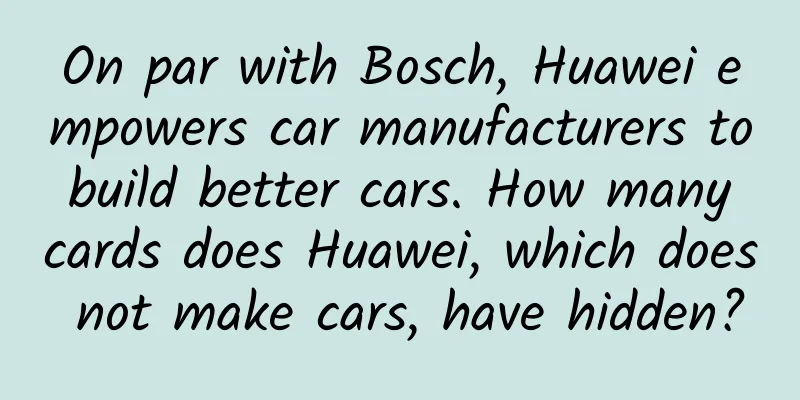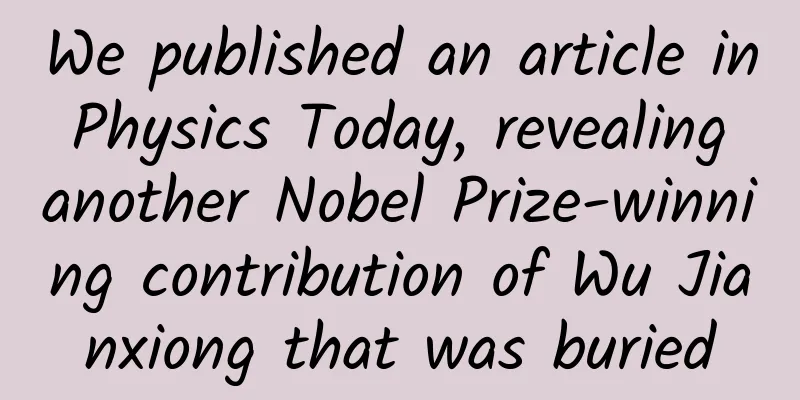Not only the sales of purifiers are growing, but also the haze diamond rings indicate the business opportunities of Industry 4.0

|
Few people can associate smog with diamonds, but recently an artist from the Netherlands drew inspiration from smog and designed a unique "diamond ring". The ring is made of a cube of plexiglass and a silver ring. Inside the plexiglass is a black stone, which is the special feature of this ring - it is extracted from the carbon content of 1,000 cubic meters of polluted air. The creator of the ring, artist Roosegaarde, appeared at the 2017 Dalian Summer Davos Forum last week. In addition to the diamond ring, he also wore a pair of cufflinks made from smog particles. In an interview with the First Financial reporter, Roosegaarde said that smog gave artists inspiration for their creations. Environmental and climate change issues are important topics at this year's Davos Forum. The core issues of Industry 4.0 raised at the conference include "promoting people-oriented technology" and "leading the concept of continuous reinvention." During the conference, the World Economic Forum and Scientific American magazine jointly selected the top ten emerging technologies in the world in 2017, believing that they will have a profound impact on mankind in the next 3-5 years. Among them, there is no shortage of green technologies focusing on clean energy and sustainable development. "Smog Purification Tower" unveiled Roosegaarde even joked that someone has already used the "smog ring" to successfully propose to their lover. Currently, this "diamond ring" is limited to the world, including 300 in Beijing, each priced at 250 euros (about 1,940 yuan). During the forum, Roosegaarde also brought his first work in China, a giant 7-meter-high "smog purification tower", to the venue in Dalian Donggang. Since September last year, Roosegaarde has been vigorously promoting his "smog tower" project in China and exhibiting it at Tianjin Minyuan Stadium and Beijing's 798 Creative Park. Roosegaarde revealed to the reporter of China Business News that the partners in Tianjin plan to officially start production of the "smog tower" from July. This large outdoor haze reduction device has six white louvered facades. Roosegaarde told the reporter from China Business News that the tower can process 30,000 cubic meters of air per hour, but it is very energy-efficient, consuming only as much energy as an electric kettle. Roosegaarde showed the reporter from Yicai Global a test report from the Eindhoven University of Technology in the Netherlands, which showed that the use of the "smog purification tower" could improve the cleanliness of the surrounding air by 20% to 25%. Roosegaarde added: "The actual purification efficiency is higher than the report shows. The purification tower can capture and collect 50% of PM2.5 particles and 70% of PM10 haze particles in the air." He gave an example that in a day and a half, the "smog purification tower" can purify the air of an entire football field. Earlier media reports said that An Pei, chairman of Tianjin Membrane Factory Environmental Protection Technology Co., Ltd., said that the first domestically produced smog purification tower will be launched in Tianjin at the end of July, but how to reduce the construction cost of China's domestically produced smog tower is still under study. On the surface, the "smog purification tower" is indeed a vivid example of "innovation changes life", and it also attracted the attention of many global media during Davos. However, according to the reporter of China Business Network, so far, there are still very limited reports that can prove that the device is effective in purifying the air. A reporter from China Business News observed from the model of the "smog purification tower" that each of the three air purification units inside contains a fan, a 10,000-volt high-voltage electrode and a polluted particle collector. "Since the tower has no filters and does not require a powerful fan to drive air circulation, it has the advantages of less noise, less energy consumption and lower maintenance costs," said Roosegaarde. But he also admitted that it is technically difficult to purify the air in outdoor open public spaces. Just an art installation? Roosegaarde told the reporter from China Business News: "There is no filter inside this device, and the purification principle is completely different from that of indoor air purifiers. It absorbs pollutants through the principle of electrostatic adsorption." It is difficult to convince professionals of such air purification principles. Jiao Yongjin, a senior industry insider and general manager of Suzhou Weitao Heavy Metal Filtration Technology Co., Ltd., told the First Financial reporter: "The principle of air purifiers is air circulation. It is difficult to process air in an open atmosphere. Even if we put aside the reliability verification of the principle, the adsorption capacity of PM2.5 of this device in the atmospheric environment is very small and very limited." Jiao Yongjin believes that the project has more symbolic significance than practical significance. Even if the government and public institutions are willing to pay for it, it will be difficult to promote it on a large scale due to problems such as abnormally high costs. Roosegaarde does not consider his work to be just an art installation. “Art and science are constantly blending, and I also hope that my work can have a practical social impact.” He responded to the reporter from China Business News: "The reason why I am interested in air purification in public areas is that I hope people can interact more in open spaces, for example, children will not be unable to play on the playground due to air pollution." According to the plan, Roosegaarde hopes that this project can be used in some public areas, such as through crowdfunding and fundraising, and built in places where the community needs it, such as kindergartens, sports venues, fitness venues, etc., to encourage everyone to participate in the entire air pollution control. This is not the first time that Roosegaarde has drawn inspiration from nature. In Amsterdam, the hometown of Van Gogh, there is a one-kilometer-long "Roosegaarde Cycle Path", which is the world's first solar-powered cycle path. The path is covered with more than 50,000 stones coated with a special material called "luminous algae". These stones absorb light energy during the day and emit beautiful starlight at night. Roosegaarde's creative inspiration comes from Van Gogh's work "Starry Night". Gabriel O'Donnell, a principle research programmer at Carnegie Mellon University's Innovation Lab, told the First Financial reporter in Dalian: "We believe that using innovative solutions to environmental problems is very worthy of encouragement. More importantly, it can draw the public's attention to environmental issues." However, O'Donnell refused to make a scientific evaluation of the smog tower, saying that he did not participate in the verification of the project. A real estate developer in Dalian who showed great interest in the smog tower told the First Financial reporter: "This concept is very interesting, but its practicality is still unknown. If there is a proven operating model in a mature market, we will invest without hesitation. Unfortunately, we haven't seen it yet." Roosegaarde told China Business News that the Chinese market has great potential in air purification, and he also plans to jointly promote "smog-reducing bicycles" with ofo. Similar to the operation of smog purification towers, smog-reducing bicycles can absorb polluted particles and release clean air around the rider. The difference is that smog-reducing bicycles use pedaling to power and clean the air, so the more crowded the city, the greater the cleaning effect. Dai Wei, founder of ofo, responded: "Roosegaarde and we share the same philosophy of solving the smog problem. We look forward to our cooperation." In addition, during the Davos Forum, the World Economic Forum and Scientific American magazine jointly selected the top ten emerging technologies in 2017 that will have a profound impact on humanity in the next 3 to 5 years, including "liquid biopsy" technology for non-invasive diagnosis of cancer; extracting drinking water from the air through a new porous crystal metal organic framework; deep learning for autonomous driving, medical diagnosis, water level monitoring, agricultural production and other fields; liquid fuel collection technology that imitates the photosynthesis of leaves to generate and store energy, bringing revolutionary impact to the solar and wind energy industries; precision agriculture that relies on solar energy and mobile phones to monitor the growth of crops in real time and provide targeted cultivation for them; deciphering cell cloud maps of various cell types in the human body; using nitrogen and phosphorus-doped carbon foam catalysts as alternative environmentally friendly and pollution-free hydrogen car catalysts; gene vaccines synthesized from DNA or RNA; sustainable living communities that use locally generated solar energy for building electricity supply through smart microgrids; and quantum computers, etc. In recent years, China has produced a large number of talents in artificial intelligence and deep learning, and many technologically advanced start-ups have emerged. Professor Tom Mitchell, Dean of the School of Machine Learning at Carnegie Mellon University, told China Business News: "Artificial intelligence has received a lot of attention in recent years and has indeed become a technology that is very beneficial to mankind. Next, how to use it to make it more beneficial to mankind, promote social development, and improve people's quality of life, such as reducing urban pollution and congestion, and helping us meet communication needs in different scenarios, are all positive applications in the future." As a winner of Toutiao's Qingyun Plan and Baijiahao's Bai+ Plan, the 2019 Baidu Digital Author of the Year, the Baijiahao's Most Popular Author in the Technology Field, the 2019 Sogou Technology and Culture Author, and the 2021 Baijiahao Quarterly Influential Creator, he has won many awards, including the 2013 Sohu Best Industry Media Person, the 2015 China New Media Entrepreneurship Competition Beijing Third Place, the 2015 Guangmang Experience Award, the 2015 China New Media Entrepreneurship Competition Finals Third Place, and the 2018 Baidu Dynamic Annual Powerful Celebrity. |
<<: Sales volume declined, but profits soared by 52%. How did Great Wall Motors do it?
Recommend
Placing a cactus in front of your computer can "absorb" radiation? Don't be too far-fetched!
What is the "radiation" around us? ! Co...
Introduction to Xiaomi news resources and advertising formats
As more and more application markets begin to dev...
International Day of Forests丨What can we do to protect the “lungs of the earth”?
Hundreds of millions of years ago A group of alga...
When heating indoors in winter, are you really paying attention to safety?
In severe cold weather, in addition to "cove...
What contributions has the scientific research results of Li Wenhui, winner of the Life Science Award, made to mankind?
On the morning of August 21, the 2022 Future Scie...
A new round of internal testing of WeChat’s exclusive input method: preventing eavesdropping and protecting privacy
[[434938]] As early as the beginning of this year...
User retention during operations and promotions is the biggest growth!
% ignore_pre_1 % In the Corsair Model AARRR of gro...
Ctrip Train Ticket iOS Project Development Experience Optimization Practice
Author | Dong Hai, Ctrip mobile development expe...
「2021」How to register a new Apple ID? The latest and most complete graphic tutorial
How to register a new Apple ID? When you start to...
Attention! This eating habit will harm you and your family. If you continue to eat like this, be careful of cancer!
April 15 to April 21 is the 29th National Cancer ...
Shared bicycles are so popular that power banks are also joining in the fun. Why are Tencent and Xiaomi investing hundreds of millions but being ridiculed by Wang Sicong?
With the emergence of shared bicycles, the "...
How to build a community operation system based on business logic?
As a means of operation, communities can be said ...
In-depth reveal of the creative exposure mechanism of information flow!
Have you ever thought about: In this day and age,...
Juniper Research: Global 5G revenue is expected to exceed US$65 billion in 2025
According to foreign media reports, market resear...
Bidding Promotion | How to reduce costs and increase clicks?
The competition environment is intensifying. Alth...









